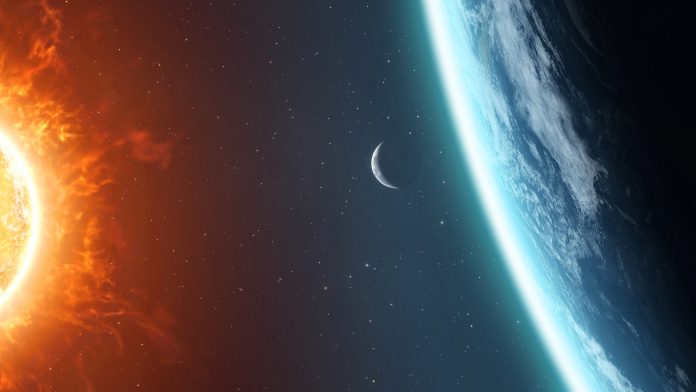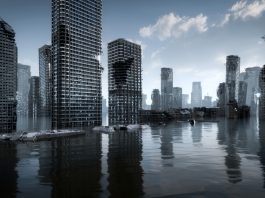Researchers have discovered that the increasing temperatures, rising levels of Carbon Dioxide (CO2), and reduced Ozone (O3), has contributed towards a stronger drought resistance.
Drought resistance
The CO2 fertilisation effect takes place when elevated levels of CO2 in the atmosphere increase photosynthesis rates. This is an influence that plants, as well as societies that are usually impacted by lack of drought resistance, are globally benefiting from. However, these benefits might be derived the drier and warmer climates caused by global warming and extreme climate events, such as floods and wildfires.
To investigate this, Peng Fu, a postdoctoral researcher and member of the Realising Increased Photosynthetic Efficiency (RIPE) team, and lead author of the study, collected and studied data from urban environments. This allowed the researchers to investigate the duelling impacts of climate change factors on vegetation in response to drought.
“We are trying to understand photosynthesis on a broader scale by looking at urban ecosystems,” said Fu. “Cities are a unique environment in that we can see elevated temperatures, air pollution and variation in these variables along cities and neighbouring rural regions. We looked at whether we could leverage this unique environment to understand the impact of the different environmental factors on vegetation growth.”
The study
Fu and his team conducted this study at the University of Illinois, which presented the opportunity to use equipment imperative to conduct the investigation into drought resistance. This included access to the free-air CO2 enrichment (FACE) facility to study how different global change factors impacted vegetation growth.
However, the researchers noted that using the FACE facility can be costly, as controlling and maintaining environmental factors can be difficult. To combat this issue Fu was able to use his expertise to extend previous work done in the FACE facility and apply it to urban environments, rather than gathering research into drought resistance from the very beginning stages.
“Long-term remote sensing datasets can be used in combination with FACE experiments to better understand how atmospheric changes in combination with climate impact plant productivity,” said Lisa Ainsworth, the Research Leader of the US Department of Agriculture (USDA), the Agricultural Research Service (ARS), a member of the Global Change and Photosynthesis Research Unit, and co-author of the study.
A combination of remote sensing and publicly available datasets were considered in this investigation. Fu and his team focused on urban-rural gradients spanning 18 years in the conterminous US and analysed 75 urban-rural pairs that represented different sizes and climate zones. This allowed drought resistance to be observed from a variety of different conditions, making the results of the study much more reliable.
“We looked at vegetation growth in non-drought and drought conditions and quantified the difference between the two, which is what we call the vegetation drought resistance,” said Fu. “If there is a smaller difference, that means it has a better ability to deal with the drought.”
Findings
Fu and his team quantified the vegetation resistance values that they gathered, which revealed a stronger resistance to drought for vegetation in urban areas, compared to vegetation in rural areas. The researchers then examined the environmental drivers of the observed discrepancies in drought resistance of vegetation growth.
The results of the study were revealed using the partial correlation method, which allowed the researchers to better understand the environmental factors and drivers that impact vegetation growth. Statistical analysis allowed the team to discover that enhanced drought resistance of urban vegetation was attributed to increased temperature and CO2 concentration, along with reduced O3 concentration.
“We think temperature can enhance the growth in drought conditions because we see that vegetation has an extended growth season, and thus more time to accumulate biomass to deal with the drought,” said Fu. “For CO2, it’s the fertilisation effect because the higher CO2 concentration in the cities leads to more vegetation growth and thus, a stronger ability to deal with the drought.”
Environmental impacts
CO2 is a greenhouse gas, and thus an increase of this in the atmosphere leads to an overabundance that traps heat, which leads to environmental concerns such as melting ice caps and rising ocean levels. Additionally, O3 is a gas that is essential for protecting the population from ultraviolet (UV) rays emitted from the sun. The reduction of this gas will lead to an increase in the dangers associated with exposure to UV rays, such as skin cancer. Therefore, the results of this investigation into drought resistance also reveal concerns regarding environmental impact.
“For understanding global warming effects, I think we can leverage the city environment or the ‘natural laboratory’ idea,” said Fu. “If we can provide solutions to dealing with the vulnerability of the urban environment to climate change, that will benefit the society as a whole and help the natural ecosystem in general.”
Fu and his team plan to continue their urban physiological approach, and to specifically observe the impact of individual factors on vegetation. This prolonged analysation will allow researchers to make projections based on climate change scenarios, as cities are already experiencing heightened temperatures.









